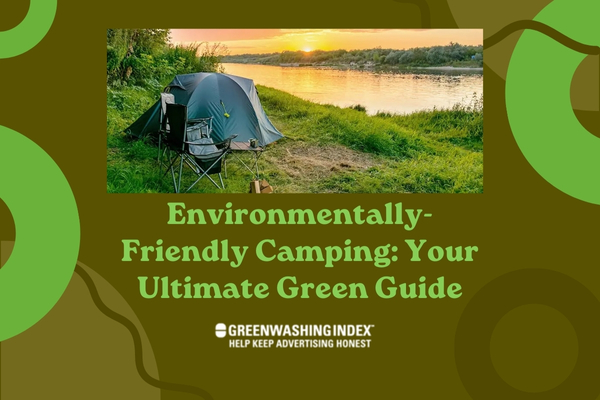Let’s talk about treading lightly on our planet while enjoying the great outdoors. Have you ever thought of making your camping trips greener? Environmentally friendly camping is not just a trend; it’s a movement towards embracing nature without leaving a scar. Imagine waking up to the sound of birds chirping, knowing that your stay in the wild is as gentle to Earth as a leaf landing on a pond. This dream can be your reality.
Camping doesn’t have to mean leaving behind footprints or taking memories that come at the expense of nature. Eco-friendly camping means choosing gear that won’t harm the environment and setting up camp in ways that let nature thrive, even after you pack up and head home. It’s all about planning right, packing light, and leaving places better than you found them so they stay beautiful for generations of adventurers to come.
What You’ll Discover Here:
- Step-by-step green camping tips
- Simple ways to protect natural habitats
- Low-impact gear options for any camper
- Sustainable practices for outdoor fun
Planning Your Eco-Friendly Camping Trip
When it comes to getting ready for a camping trip, I always think about how I can do it in a way that’s good for our planet. It’s all about being gentle on nature so that other people can enjoy the great outdoors too.
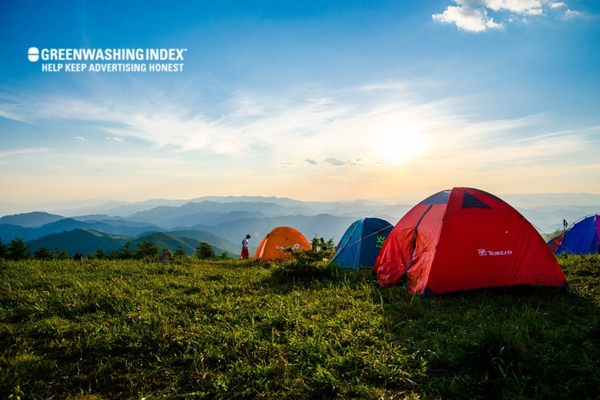
Choosing a Sustainable Destination
When I plan for an environmentally friendly camping trip, the first thing on my list is picking a place that loves nature just as much as I do. This means finding spots that are not just beautiful but also care about their impact on Earth. Here’s how I find such places:
- Look for Certifications: Some spots have special awards or certifications like “Eco-Tourism Certified” or “Green Seal.” These places have been checked out and are confirmed to be friends of the earth.
- Research Online: A lot of camping areas now talk about how green they are right on their websites. They might tell stories about their recycling programs or how they protect local animals.
- Ask Around: Sometimes, the best tips come from fellow nature lovers. I’ll drop a question in online forums or check with friends who also enjoy low-impact camping.
By choosing destinations that support environmentally friendly camping, I make sure my visit helps keep these beautiful places healthy for years to come.
Packing Environmentally-Friendly Camping Gear
A big part of keeping my trip green is making sure all my gear is kind to the planet. Here’s what goes into my backpack:
- Non-Harmful Products: When it comes to soap and bug spray, I always pick items that won’t hurt the plants or animals. That usually means things that can break down in nature without leaving anything bad behind.
- Solar-Powered Gear: Instead of using batteries that can leak nasty stuff into the ground, I go solar. Lights and chargers powered by the sun mean less waste.
- Reusable Containers: Single-use plastic can be terrible for wildlife, so instead of throwing away water bottles and food wrappers, I carry everything in containers that can be used again and again.
Packing this way takes a bit more thought, but it’s all about respecting those natural playgrounds we love so much.
Pre-Trip Preparation for Minimal Impact
The right plan can really cut down on how much my trip might hurt our planet. Before heading out:
- Meal Prep with Care: Planning meals means less waste when you’re done eating. Things like pre-cut veggies and spices put in tiny reusable bags help a lot.
- Smart Route Planning: By figuring out where you’re going ahead of time, you stay on trails – which protects wild plants – and you don’t use up extra gas getting lost!
–Activity Choices That Respect Nature: Some fun stuff can harm our surroundings if we’re not careful! Things like bird watching or hiking leave almost no mark at all; it’s good to think about this when making plans.
Every choice counts when it comes to environmentally friendly camping! With these steps, we make sure nature stays just as wonderful each time we visit.
Setting Up an Eco-Conscious Campsite
When I go camping, I love the idea of keeping things green. Environmentally friendly camping means setting up a campsite with nature in mind. Here’s how I do it:
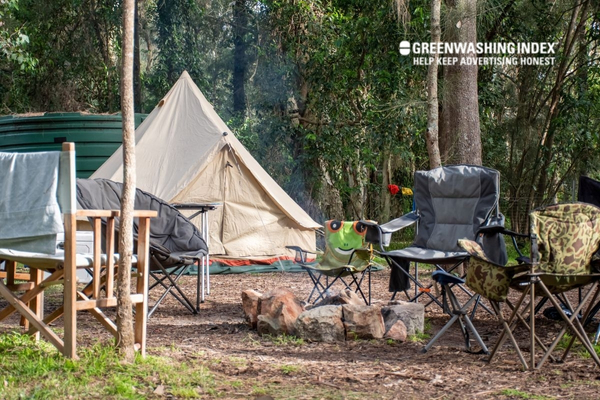
Leave No Trace Principles
The seven principles outlined by Leave No Trace are my golden rules for protecting the environment while enjoying it responsibly:
- Plan Ahead and Prepare – Before even stepping outside, I make sure to know about where I’m going. This helps me follow the rules and stick to trails.
- Travel and Camp on Durable Surfaces – To keep nature just like it is, I always use existing trails and campsites instead of making new ones.
- Dispose of Waste Properly – Everything that comes with me leaves with me, too. That means trash, leftover food, and even the water used for washing have to be taken care of right.
- Leave What You Find – When I see beautiful flowers or interesting rocks, I leave them where they are so others can enjoy them too.
- Minimize Campfire Impacts – If I make a fire, it’s small, using only fallen wood or sticks that can burn completely down to ash.
- Respect Wildlife – If wildlife shows up near my campsite, watching from a distance without feeding them is how to go.
- Be Considerate of Other Visitors – Keeping noisy fun quiet in respect for others is part of making sure everyone enjoys their nature time as much as I do.
Sustainable Energy Use at Your Campsite
Using renewable energy sources such as solar panels or hand-cranked devices makes camping kinder to our planet:
- Solar chargers can power up my gadgets without needing plugs.
- Hand-cranked radios or flashlights work great because they don’t need batteries.
- Even cooking can be green if a solar cooker is used—they cook food using just sunlight!
Low-Impact Shelter Options
Finding eco-sensitive accommodations like tent alternatives or natural shelters keeps things simple:
- Tent Alternatives: Hammocks designed to leave no trace are a good pick – they allow me to sleep above ground without messing up plants or soil.
- Using a tarp shelter made from recycled materials might not sound fancy, but it does give cover if rain decides to join my camping trip.
- Designing natural shelters takes skill, but using branches and leaves nearby (without hurting living plants!) works if done right.
Keeping all these details in mind makes environmentally-friendly camping easy and fun! It’s about enjoying nature without leaving too much behind—just footprints!
Sustainable Practices While Camping
When I head out into the great outdoors, I make it my mission to embrace environmentally-friendly camping every step of the way. To me, it’s crucial to ensure that the natural beauty that draws us to camping remains untouched for future generations. Here are some of my go-to strategies for sustainable camping:
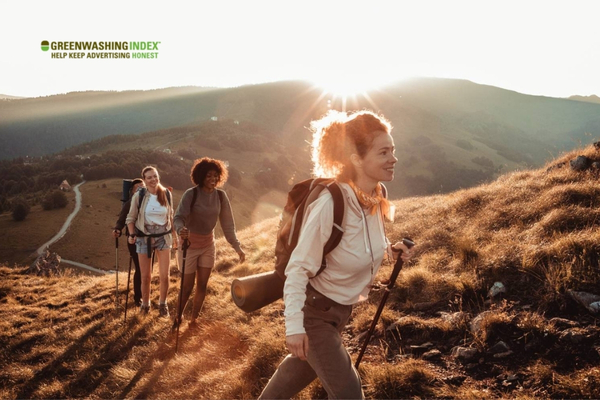
Responsible Trash Management
When I camp, I take care of our planet by managing my trash right. Here’s how:
- Know what can be recycled: Before I go camping, I check which materials can be recycled at the campsite or nearby. Usually, things like paper, cardboard, glass bottles, and certain plastics are recyclable.
- Separate your waste: At my campsite, I set up different bags for recyclables, compostables (like food scraps), and trash. This way, nothing gets mixed up.
- Compost organic waste: Food scraps don’t belong in the trash. They can turn into natural fertilizer. If there is a compost system at the campsite, that’s where it goes. If not, consider bringing a small compost bin and taking it home to your own compost pile.
- Pack out what you pack in: Everything I bring to the campsite comes back with me if there’s no proper disposal on site—especially plastic items that can harm wildlife and nature.
Conserving Natural Resources in the Wild
Keeping nature beautiful means using its resources carefully:
- Use water wisely: Instead of bringing many plastic bottles of water with me when camping, I bring reusable bottles and a water filter or purification tablets to make natural water safe to drink. Here’s how:
- Find a good water source: Clear running streams are usually best.
- Filter: Run the water through a portable water filter.
- Purify: Add purification tablets if needed for extra safety.
- Be smart with firewood: Campfires are cozy, but we need to keep forests healthy, too.
- So here’s what I do:
- Only use dead wood on the ground—or buy local firewood so as not to spread tree diseases from other places.
- Never break branches from living trees—it hurts them and isn’t responsible.
- So here’s what I do:
Wildlife Interaction Best Practices
Seeing animals is part of why camping is wonderful! But we need to respect their homes:
- Watch quietly from a distance: When you see wild animals, it’s tempting to get close, But keep your distance so as not to disturb them.
- Good ways:
- Use binoculars
- Stay on marked trails.
- Don’t feed wildlife: It might seem kind, but feeding wild animals changes their natural behaviors and diets—in bad ways.
Remembering these simple habits makes sure that we’re enjoying nature without harming it during our adventures. That’s what environmentally-friendly camping is all about!
Enjoying Nature Without Leaving a Trace
When I go camping, I love soaking in the beauty of nature. But it’s important to enjoy it without harming it. That’s why environmentally-friendly camping is close to my heart.
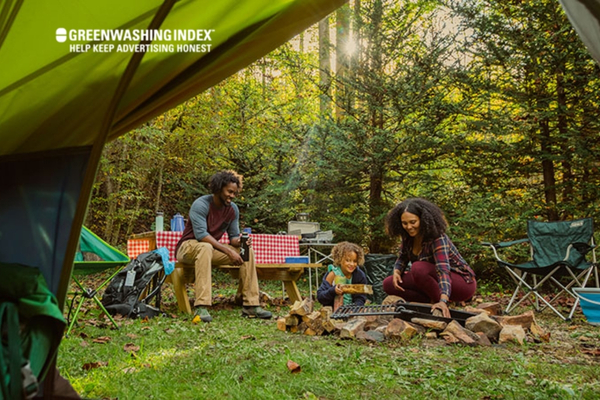
Nature Activities That Encourage Conservation
When I’m out in the wild, engaging in eco-conscious activities is a must. Bird watching is a gentle way to connect with nature. I use binoculars and quietly observe the birds as they go about their day. This way, I don’t scare them or disturb their natural behavior.
Nature photography is another activity that lets me capture beauty without leaving any harm behind. When doing this, I make sure to keep to marked trails and never pick plants or move rocks for a photo.
I find both activities rewarding as they help deepen my appreciation for conservation and biodiversity while ensuring that my camping footprint remains low.
Tips for Hiking Sustainably
Now, let’s talk about hiking sustainably because trail etiquette matters big time, too! Here’s how you can hike responsibly:
- Stay on Paths: Always hike on designated trails and paths—this keeps plants around the trail safe and helps prevent soil erosion.
- Respect Wildlife: If you see animals, enjoy them from a distance without trying to feed or approach them.
- Pack It In, Pack It Out: Whatever you bring with you on your hike—food wrappers, water bottles—make sure they leave with you.
- Be Quiet: Loud noises can disturb wildlife and ruin other hikers’ experiences, so keep your voice down.
Remembering these simple tips makes me feel good because knowing that I am preserving nature while enjoying its wonders feels like giving back in kind.
If we do environmentally-friendly camping right by following green camping tips, showing respect for wildlife through actions like leave-no-trace camping habits, and practicing low-impact hiking rules – we’re playing our part as eco-conscious outdoors enthusiasts!
FAQs
Can you go camping and still be eco-friendly?
Yes, by practicing low-impact camping habits and bringing eco-conscious gear, you can enjoy nature without harming it.
What are some essential elements of environmentally-friendly camping gear?
Eco-friendly camping gear includes items made from sustainable materials, reusable containers, solar-powered devices, and biodegradable soaps.
How does Leave No Trace relate to environmentally friendly camping?
Leave No Trace is a set of principles that promote nature-friendly camping habits, ensuring you enjoy the outdoors while minimizing your environmental impact.
Conclusion
I can’t stress enough the value of environmentally friendly camping. Every little action we take when outdoors can have a huge impact on preserving nature’s beauty for future generations. By choosing to be an eco-conscious camper, I help sustain the wilderness and wildlife that I so deeply love. From picking green gear to practicing Leave No Trace principles, every step towards low-impact camping is a stride towards a better planet.
It’s not just about enjoying the great outdoors but also ensuring it remains unspoiled. Keeping campsites clean, reducing waste, and respecting wildlife are just a few ways in which I can make my camping adventures more sustainable.
Key Takeaway Points
- Always plan with the environment in mind.
- Equip yourself with sustainable camping gear.
- Adhere to Leave No Trace principles at all times.
- Manage your waste responsibly and minimize your resource usage.
- Engage in nature activities that promote conservation while avoiding harm.

